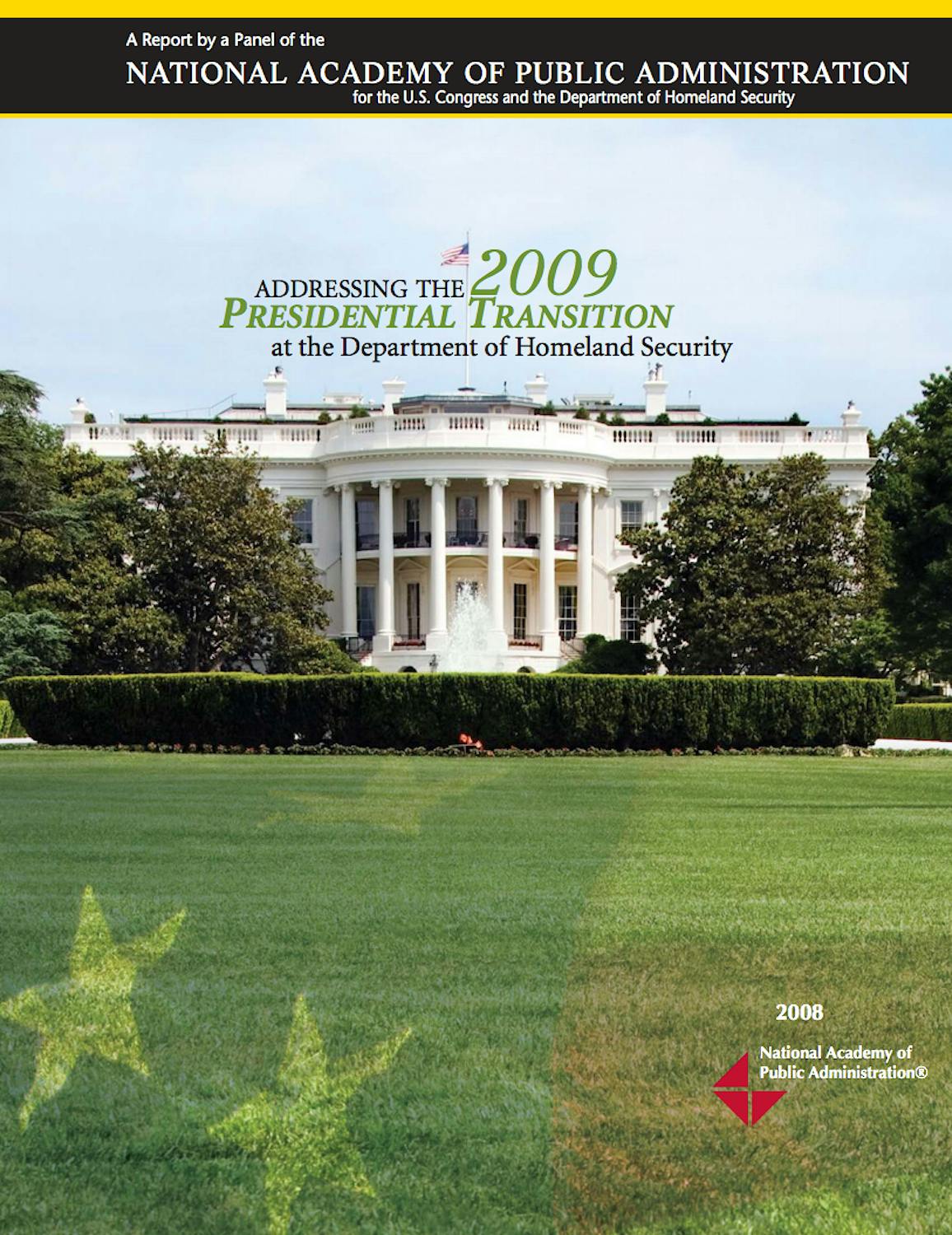
Addressing the 2009 Presidential Transition at the Department of Homeland Security
With a forthcoming presidential change on the horizon and concern that a departure of significant members of DHS’s leadership team could further reduce the department’s capabilities, congressional leaders thought it prudent to review DHS’s senior staffing structure and composition, as well as assess and benchmark senior career training and development programs. These leaders were “concerned that the department and its components will not be able to function effectively when the change in administration occurs in 2009.” Congress and DHS asked the National Academy to look at these issues and provide guidance. This report is the result of the request. Chapter 6 details the Academy Panel’s recommendations and a suggested timeline for implementation.
The Panel also focuses on two issues that, left unresolved, will continue to make it difficult for DHS to fulfill its mission. First, the Panel believes that there is more work to do to overcome resistance to DHS headquarters’ role in integrating the work of the individual components. This was one of the founding goals for the department. Second, the Panel notes the problems created for DHS by the multiple congressional oversight committees to which it reports. The Panel found that this oversight has stretched DHS resources, made it difficult to enact important legislation and created a potential for policy disarray.
Click the button below to view the View Study Report.
View ReportKey Findings
The Academy Panel has made a number of important recommendations to help DHS with the upcoming presidential transition. This report aligns recommended strategies with key events—the political conventions, the election, the inauguration and beyond. Identifying and filling critical positions, training new executives and working aggressively to get the next President’s homeland security team in place are vital steps that need to be taken. To succeed in these efforts, DHS also will need the support of Congress and the White House.
Recommendations
To provide helpful and practical guidance to DHS, the Panel proposes that the department take the following steps tailored to Presidential transition timeframes. Specifically:
- Now until this summer’s national party conventions. Focus on quickly completing, updating and executing its transition plans; identify key operational executive positions; ensure that training and joint exercises are begun; and implement the hiring and training proposal in this report.
- From the national party conventions to the election. Consistent with the recommendations of the 9/11 Commission and “Sense of the Senate” provisions, work with Executive Branch agencies and Congress to reach out to the Presidential candidates to identify potential homeland security transition team members and help them obtain security clearances by Election Day.
- From the election to the inauguration. Work with the incoming administration, the Executive Branch and Congress to ensure that the new Secretary of Homeland Security is sworn in on Inauguration Day; that key executives are identified and voted on by the Senate as quickly as possible, recognizing that any day a critical position is vacant is a “gap” in our homeland security coverage; and that transition training and joint exercises are provided to executive appointees and nominees.
- Following Inauguration Day. Continue training of new appointees, nominees and careerists to build trust and operational performance, and reexamine current executive positions and allocations to support administration priorities. Within the first six months of the new administration, conduct a “capstone” scenario exercise to evaluate the effectiveness of transition planning, training and overall operational readiness.
